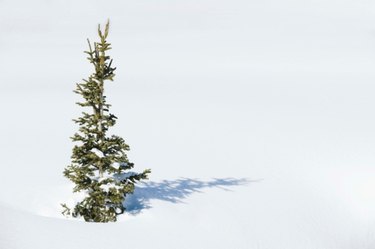
Seeing black needles on your pine tree may worry you, especially if it is a mature tree and an important element in your landscaping. There are a few possible causes of the problem and they can be controlled.
Sooty Mold
Video of the Day
Sooty mold is caused by fungi growing on honeydew that aphids, scale or other insects have excreted on the tree. It looks like black fuzz coating the needles and can affect other parts of the tree. It is mainly a cosmetic problem and won't affect the tree unless the problem becomes severe enough to block photosynthesis.
Video of the Day
Needle Blight
Needle blights are caused by fungi and, in the beginning stages, can cause small black spots on needles. Eventually, needles die and turn brown. In late summer, fruiting bodies appear on the dead needles appearing as black or gray spots.
Needle Cast
Needle cast diseases are also caused by fungi. Infected needles die and fall off the tree. Fruiting bodies of the fungi will cause black spots on needles that are already dead.
Solutions
Sooty mold can be prevented by reducing populations of aphids and scale insects in the area. They produce the honeydew the fungi grow on. Needle blight and needle cast diseases can be controlled by keeping trees as healthy as possible, making sure trees have adequate air circulation and disposing of infected plant material. Fungicides can help, but follow label directions carefully.